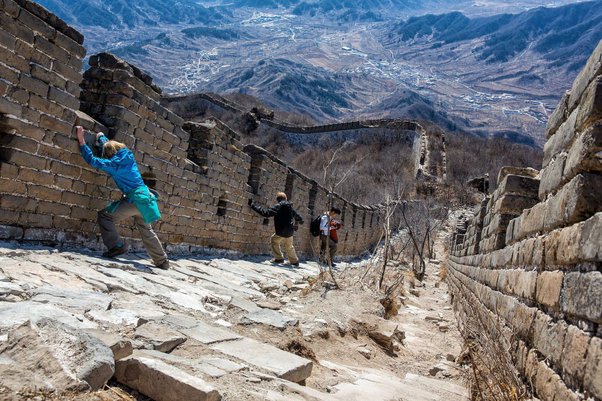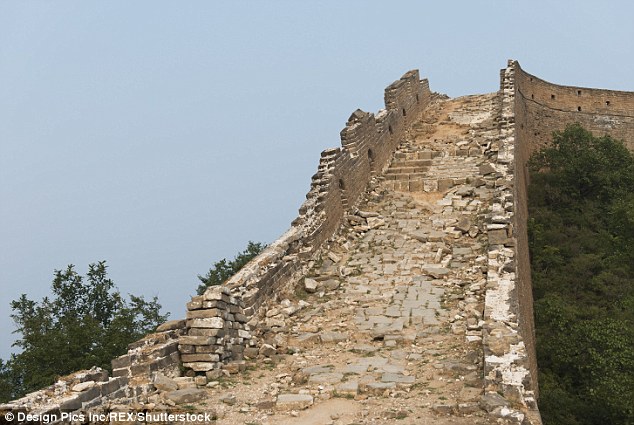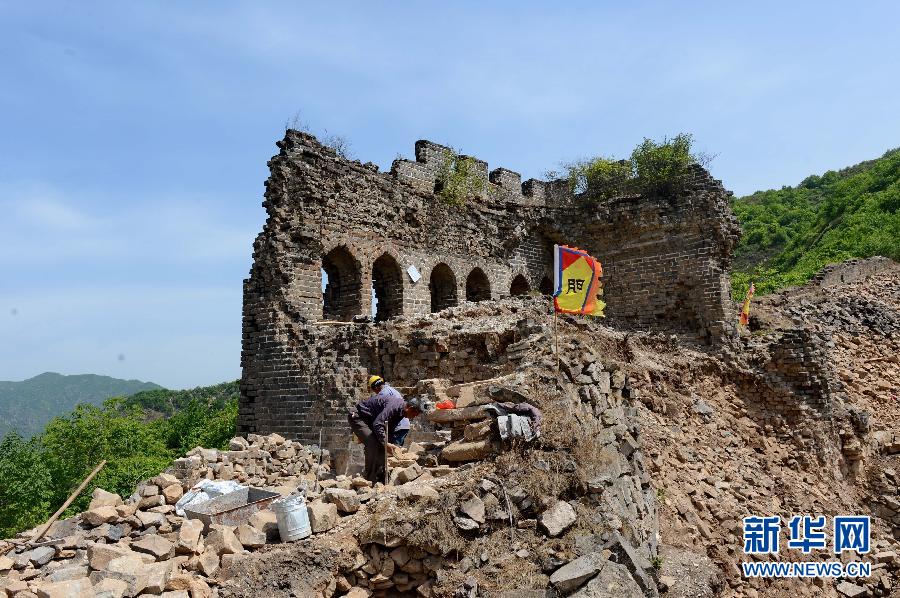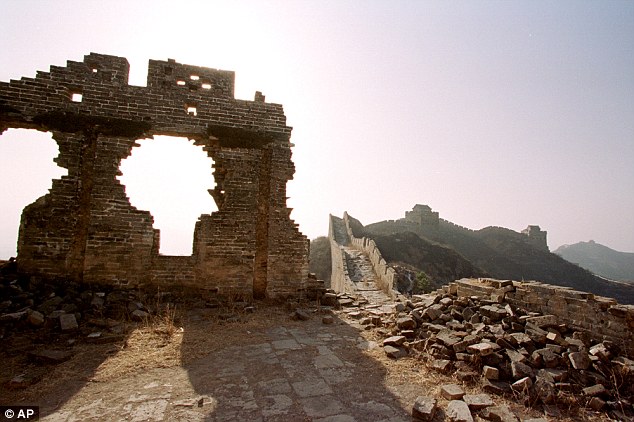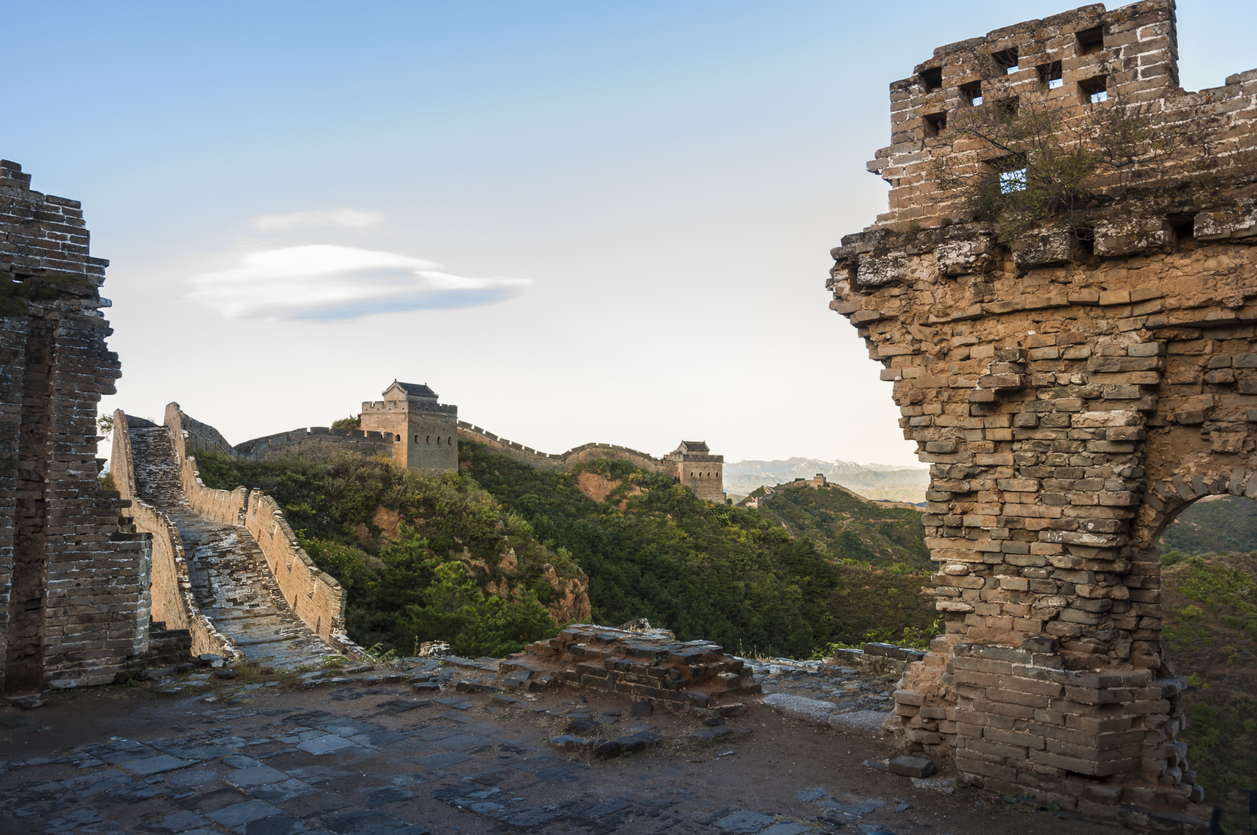
dilapidated Great Wall in china
The Great Wall of China, a marvel of ancient engineering and a symbol of China’s enduring history, stands today as a testament to human ingenuity and resilience. Spanning thousands of miles across varied landscapes, this monumental structure continues to captivate the world with its grandeur and cultural significance.
While some sections have been meticulously preserved and restored, others bear the marks of time and natural forces, reflecting the challenges of maintaining such a vast and historically significant monument. Amidst efforts to balance tourism, conservation, and historical stewardship, the Great Wall remains a beacon of China’s rich heritage and a testament to the lasting legacy of its builders.
The disappearance of parts of the Great Wall of China is a complex and multifaceted issue that spans centuries and involves various factors.
Factors Contributing to Disappearance
1. Natural Erosion: The Great Wall stretches through diverse terrains, including mountains, deserts, and grasslands. Over time, natural forces such as wind, rain, snow, and seismic activity have eroded sections of the Wall. This erosion is often exacerbated by the materials used in its construction, such as mud, brick, and stone, which degrade over time
2. Human Activities: Throughout history, especially during times of political turmoil or economic hardship, local communities sometimes dismantled sections of the Wall to reuse the materials for other construction projects or for agricultural purposes. In some cases, bricks from the Wall were taken to build houses and roads nearby.
3. Neglect and Lack of Maintenance: During periods when the Wall was no longer strategically important or when ruling dynasties shifted their focus away from northern defense, maintenance of the Wall may have been neglected. Without regular upkeep, sections of the Wall fell into disrepair and eventually crumbled.
4. Tourism Impact: In recent decades, tourism has brought millions of visitors to the Great Wall, particularly to well-known sections near Beijing like Badaling and Mutianyu. The influx of tourists, while economically beneficial, has also led to wear and tear on these sections from foot traffic, as well as the construction of infrastructure to support tourism, which can impact the integrity of the Wall.
Conservation Efforts
In response to the disappearance and degradation of the Great Wall, efforts have been made to preserve and protect the remaining sections:
Conservation Projects: Various conservation projects have been initiated by the Chinese authorities and international organizations to stabilize and restore sections of the Wall; These projects often involve using traditional methods and materials to maintain the historical authenticity of the Wall.
Legal Protection: The Chinese government has enacted laws and regulations to protect the Great Wall as a national cultural heritage site. These measures aim to prevent further damage and unauthorized alteration of the Wall.
Public Awareness and Education: Educational programs and initiatives raise awareness about the historical significance and cultural value of the Great Wall. By fostering appreciation and understanding, these efforts encourage responsible tourism and respect for the Wall’s preservation.
Conclusion
While parts of the Great Wall of China have indeed disappeared over time due to natural processes, human activities, and other factors, ongoing conservation efforts strive to protect and maintain this iconic symbol of China’s ancient civilization. By balancing preservation with sustainable tourism and public engagement, there is hope to safeguard the remaining sections of the Great Wall for future generations to appreciate and admire.
For advertising and content publication, what’s app Xylose Magazine on 0574170347

